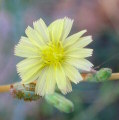| |
|
 | |
| MaltaWildPlants.com by Stephen Mifsud |

|
| |
|
|
 |  |  |  |
| External Links: |
|
Allium sphaerocephalon subsp. arvense (White Round-headed Garlic) |

Allium sphaerocephalon subsp. arvense (AMARYLLIDACEAE.)
Images for this profile are taken from the Maltese Islands after year 2000. |
|
| Nomenclature and Basic Information |
Species name : |
Allium sphaerocephalon subsp. arvense(Guss.) Arcang.
Published in Comp. Fl. Ital. 702 (1882) |
Synonyms :
(basionym or principal syn.) |
|
Plant Family : |
Amaryllidaceae
Jaume St.-Hil (The Daffodil or Amaryllis Family)
28 species from the Amaryllidaceae family are recorded from the Maltese Islands. | English name(s) : | White Round-headed Garlic |
Maltese name(s) : |
Tewm ta' Għawdex |
Status for Malta : |
Indigenous. Present on the Maltese islands before man |
Frequency : |
Very Common Common Frequent Scarce Rare Very rare Extinct |
Growth form : |
Raunkiaer lifeform [info]: GEOPHYTE ( bearing underground bulbs, rhizomes, stolons, etc. )
Germination [info]: Monocotyledon |
Legal Protection : |
Not legally protected till the last update of this website (2/Mar/2022) |
Red List (1989) : |
Threatened status for the Maltese Islands and has been listed in the Red Data Book (1st ed.) |
Flowering Time : |
May – July |
Colour of Flowers: |
White |
Toxicity: |
Mildy toxic, can cause adverse conditions if consumed in large quantities |
Name Derivation : |
Allium: The classical Latin name for garlic. (Latin origin )
sphaerocephalon subsp. arvense:
|
Planting in rural areas : |
Can be planted in rural areas according to ERA Guidelines |
Remarks : |
Locally frequent at the coastal cliffs in Gozo, very rare in mainland malta. Possibly introduced by Gozitan farmers as a trial crop. A very rare Allium species found only on the cliffs of South West to West of Gozo. |
|
|
Description, Habitat and Distribution | |
Habitat in Europe: |
Rupestral dry and open habitats. | |
Preferred habitat in Malta: |
Coastal cliffs mostly in the island of Gozo | |
Botanical Description: |
Bulbs 1-2 cm in diameter, ovoid; outer tunics membranous or coriaceous, sometimes breaking into parallel fibres; bulblets white or yellowish, acuminate, stalked and enclosed within sheath on lower part of the stem. Stem 5-90 cm. Leaves 2-6, up to 30 cm x 1-4 mm, fistular, semicylindrical, canaliculate, sheathing the lower ¼-½ of the stem. Spathe up to 2 cm, usually 2-valved, shortly beaked, persistent, shorter than the umbel. Umbel 1-6 cm in diameter, usually less than 3 cm, subglobose to very broadly ovoid, sometimes with bulbils; pedicels 2-30 mm, unequal. Perianth cylindrical to narrowly ovoid; segments 3.5-5.5 x 1.2-2.5 mm, white with green or yellowish keel, the outer mostly narrowly ovate or lanceolate, keeled, the inner slightly narrower, obtuse to almost truncate or subacute, papillose or smooth on keel and surface. Stamens exserted; outer 3 filaments 4-7 mm, simple or rarely tricuspidate, the inner 3 with the basal lamina 1-2 times as long as the central cusp, the lateral cusps shorter to longer than the 1.5-3 mm central cusp; anthers reddish before dehiscence. Capsule c. 4 mm | |
Distributional range: |
C. to E. Mediterranean region |
Distributional map in Europe
and the Mediterranean region (2018): |
|
Occurrences in Europe.
(from Flora Europaea pre year 1993): |
Albania, Bulgaria, Crete, Greece, Italy (excl. Sicily and Sardignia), ex-Jugoslavia, Sicily and/or Malta |
Occurrences in Europe and the Mediterranean region.
(from Euro+Med Checklist, 2019)
Country codes
|
AE(G) Ag Al Eg Gr LS Ma Si Tn Tu(A) |
|
| | |

